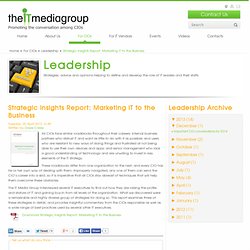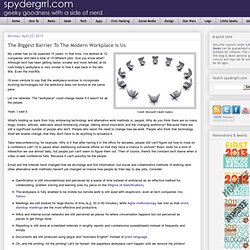

John Hagel on How Businesses Build Around Innovation. John Hagel is a regular contributor for Techonomy and a director with Deloitte.

He and John Seely Brown, co-chairs of Deloitte’s Center for the Edge, recently published a report tackling one of Techonomy’s central themes: How can institutions adapt to exponential technology change and reorganize themselves for “scalable efficiency?” Techonomy’s Adam Ludwig interviewed Hagel by email about the key ways organizations can foster an innovative environment for learning and transformation.
Other than reading your report, how do institutions figure out how to adapt their practices for better innovation? Our analysis of long-term return-on-asset trends for all public companies in the United States suggests that most institutions are failing to adapt their practices for better innovation. Return on assets for all U.S. public companies has declined by 75% since 1965 and there is no sign of this turning around. What happens if institutions fail to build new systems that foster innovation? Gary Hamel On Innovating Innovation.
Engineering Serendipity. Innovating Around a Bureaucracy - Brad Power. By Brad Power | 9:00 AM March 8, 2013 What do you do if you’re a leader in a large, successful organization with an entrenched bureaucracy, and you see the need for innovation?

Can you change the way a large organization — such as the federal government — does its work, when all the forces are arrayed for stability and conservatism? Consider the story of the Business Transformation Agency of the Department of Defense, which was founded in 2005 under Defense Secretary Rumsfeld, and “disestablished” in 2011 by Defense Secretary Gates. The Business Transformation Agency was populated by people brought in from the commercial sector. They were bold and brash and injected fresh new ideas that challenged existing policy and practice in many quarters of the Department of Defense administration (such as finance, human resources, procurement, and supply chain processes). The Internal Revenue Service (IRS), however, was successful in transforming its bureaucracy.
Strategic Insights Report: Marketing IT to the Business. Details Tuesday, 30 April 2013 16:49 Written by Dave Carey All CIOs face similar roadblocks throughout their careers: internal business partners who distrust IT and want as little to do with it as possible; end users who are resistant to new ways of doing things and frustrated at not being able to use their own devices and apps; and senior management who lack a good understanding of technology and are unwilling to invest in key elements of the IT strategy.

These roadblocks differ from one organization to the next, and every CIO has his or her own way of dealing with them. Improperly navigated, any one of them can send the CIO’s career into a skid, so it is imperative that all CIOs stay abreast of techniques that will help them overcome these obstacles. The IT Media Group interviewed several IT executives to find out how they are raising the profile and stature of IT and gaining buy-in from all levels of the organization. Download Strategic Insights Report: Marketing IT to the Business. What High Growth Companies Share in Common.
Over the past six years The World Database of Innovation initiative has uncovered the world’s first statistics behind the practices that allow large organizations to grow and to innovate.

In collaboration with innovation leaders and other experts Uri Neren and his team found 27 management structures, processes, and cultural practices are shared by the world’s fastest growing companies that make what could be called an “Innovation Management Equation.” We have bad news: there is no formula for Innovation Management. No silver bullets, templates, one-size-fits all, or easy answers. But, a new research project is slowly unraveling the next best thing to an “Innovation Management Equation.” This map of Innovation Management may look familiar, but look a bit deeper and you will see that it is actually an overview world’s first empirical evidence behind the many approaches to innovation management.
In 2007, I was commissioned by The Mayo Clinic and Dr. 1. 2. 3. 4. 5. 6. 7. 8. 9. Institutionalising Serendipity via Productive Coffee Breaks. The Biggest Barrier To The Modern Workplace is Us. My career has so far spanned 15 years.

In that time, I've worked at 12 companies and held a total of 15 different jobs. And you know what? Although tech has been getting faster, smaller and more refined, at its core today's workplace is very similar to how it was back in the late 90s. Even the mid-80s. I'd even venture to say that the workplace evolves to incorporate evolving technologies but the workforce does not evolve at the same pace. Let me reiterate: The "workplace" could change faster if it wasn't for all the people. Yeah, I said it. What's holding us back from truly embracing technology and alternative work methods is: people. Take teleconferencing, for example. Email and the Internet have changed how we exchange and find information, but social and collaborative methods of working (and other alternative work methods) haven't yet changed en masse how people do their day to day jobs.
Alternative work methods are still perceived as novelties: fun, entertaining and unsustainable.